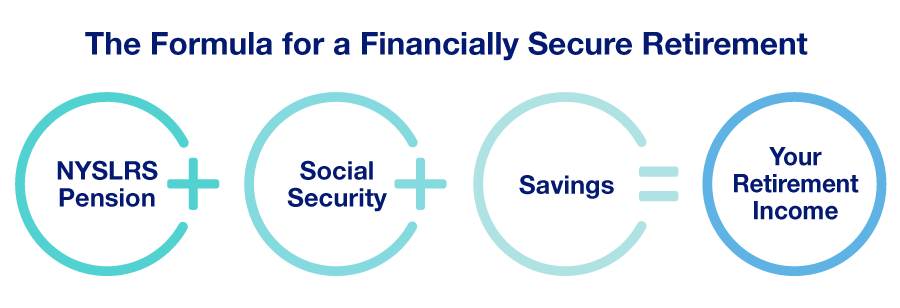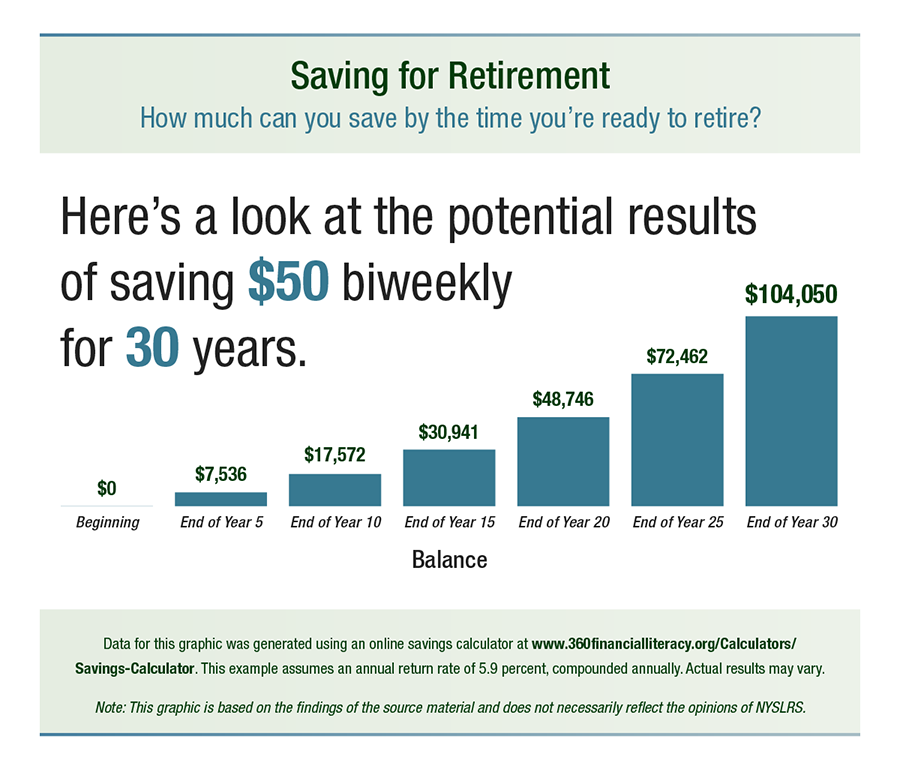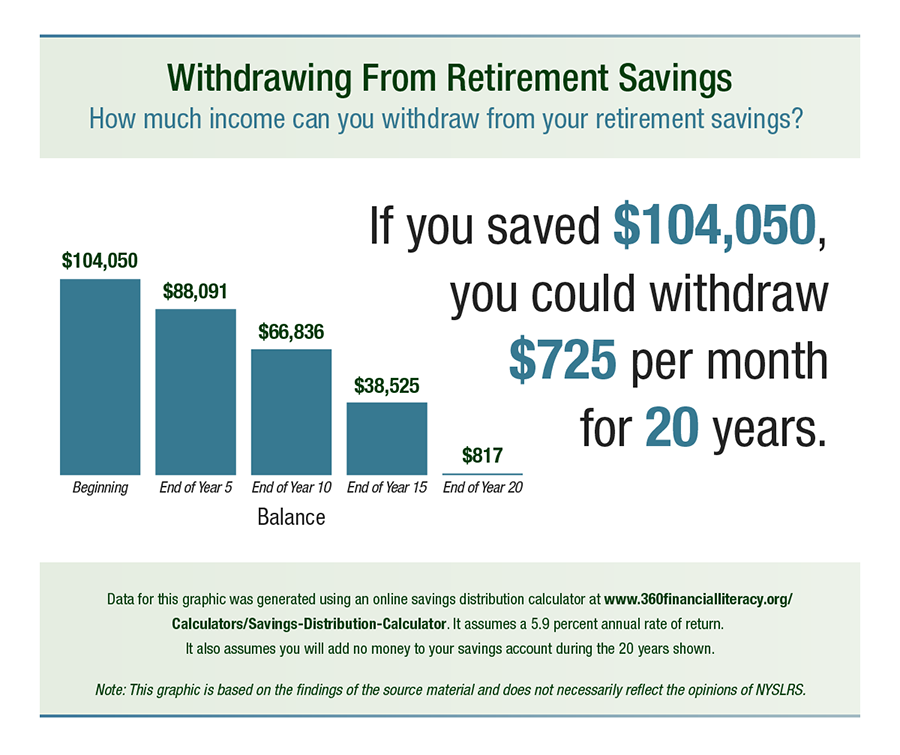The day you retire may seem far into the future but the steps you take now to save for retirement can make a huge difference when that day finally arrives.
Your Savings: An Important Part of Your Post-Retirement Income
Not sure how much you’ll need to save for retirement? It’s helpful to look at the other sources of post-retirement income you’ll have available to you first before you set a savings goal.
Think of retirement security as a three-legged stool, with three sources of income working together to provide financial stability when your working days are over. The first income source is your NYSLRS pension, which provides you with a monthly benefit for the rest of your life. The second is Social Security, which on average could replace up to 40 percent of your pre-retirement income. The third source is your personal retirement savings.
Why You Should Open a Personal Retirement Savings Account Now
Financial experts say you’ll need 70 to 80 percent of your pre-retirement income to maintain your lifestyle during retirement. A retirement savings account can supplement your NYSLRS pension and Social Security and help you reach that income-replacement goal.
But it’s important to start saving as soon as you can because you need time to let your money grow. With the power of compounded interest, the money you invest makes more money for you over time.
Having a pension means you may not need to save as much as someone relying solely on 401(k) investments for their retirement income. If you’re just starting out in your career, you may want to pick a savings amount (or percentage of your earnings) you’re comfortable with. Use a retirement savings calculator to see how much your savings plan could yield over time, or test the results of different savings amounts.
Here you can see the potential savings results of someone who invests $50 every two weeks over 30 years. While the stock market is known to experience downturns, stock values tend to rise. Historically, over the long term, stock market returns average about 10 percent a year.
As you get closer to retirement, you should develop a plan to withdraw money from your retirement savings. A withdrawal plan will give you a better grasp of the income you can expect and how long it will last.
Here is one possible withdrawal strategy, which was designed to provide retirement income for 20 years. Please note that the impact of inflation can decrease the value of a dollar over time, meaning that the money you withdraw in the future may not have the same value that it has today.
Ways to Save
State workers and some local government employees can save for retirement through the New York State Deferred Compensation Plan (NYSDCP). The NYSDCP offers traditional pre-tax and Roth 457(b) accounts. You can start by having as little as $10 deducted from each paycheck, then choose how your money will be invested from a variety of options. With a tax-deferred savings account, you don’t pay income tax on your contributions until you start withdrawing money in retirement.
Depending on your employer, they may offer other retirement savings plans. Check with your human resources office or benefit administrator to learn what plans are available through your employer.
Banks or other financial institutions, such as insurance companies and investment firms, also offer savings plan options. For example, with a traditional Individual Retirement Arrangement (IRA), your contributions can be fully or partially tax-deductible. With a Roth IRA your taxes are not deferred on the amount you deposit, but, if you satisfy certain requirements, qualified distributions are tax-free.
With your retirement savings, you get to decide how much to save and how to invest it. The key is to start saving early so your money has time to grow. A healthy retirement savings nest egg will give you more flexibility during retirement, helping ensure that you’ll be able to do the things you want to do. It can also provide peace of mind by acting as a hedge against inflation and providing a source of cash in an emergency.
Rev. 10/22




